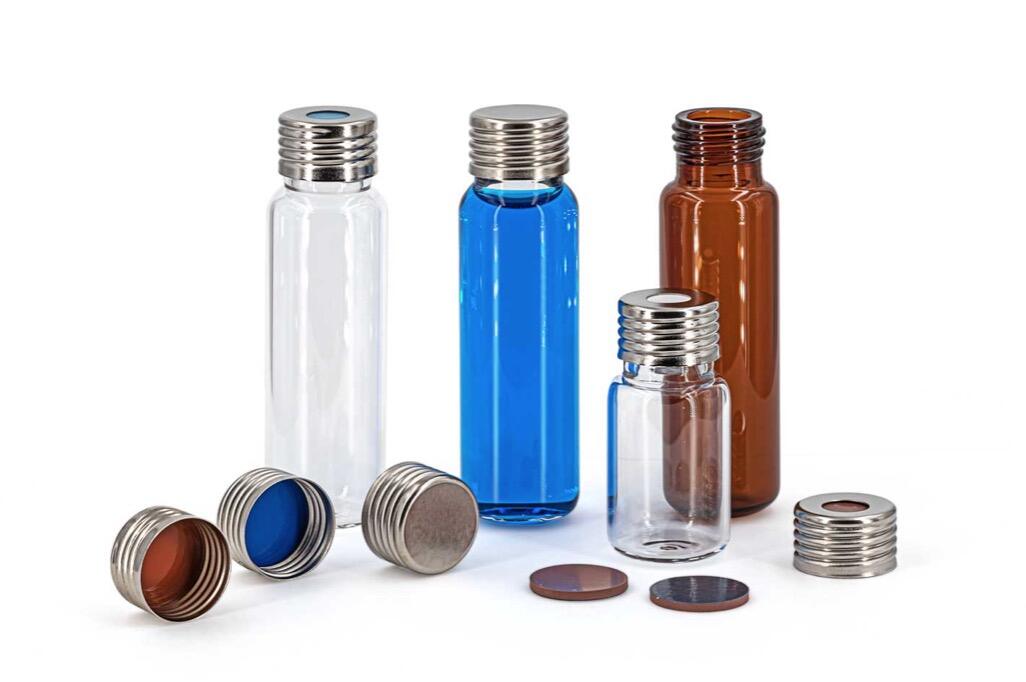Understanding HPLC Vial Selection for Laboratory Success
The selection of appropriate HPLC vials plays a crucial role in achieving accurate and reproducible chromatographic results. These seemingly simple containers serve as the foundation for reliable sample analysis, protecting valuable samples and ensuring consistent data quality. Whether you're conducting pharmaceutical analysis, environmental testing, or chemical research, the right HPLC vial can make the difference between success and failure in your analytical procedures.
Laboratory professionals often underestimate the impact that HPLC vial choice can have on their analytical results. From material compatibility to volume accuracy, each aspect of vial selection demands careful consideration. This comprehensive guide will walk you through the essential factors to consider when choosing HPLC vials, helping you optimize your chromatographic analyses and maintain data integrity.

Key Considerations in HPLC Vial Materials
Glass Composition and Chemical Compatibility
The most common materials used in HPLC vial manufacturing are Type 1 borosilicate glass and soda-lime glass. Borosilicate glass offers superior chemical resistance and thermal stability, making it ideal for most analytical applications. These vials minimize ion leaching and maintain sample integrity, particularly important when working with sensitive compounds or trace analysis.
When selecting glass HPLC vials, consider the pH range of your mobile phases and samples. Borosilicate glass performs exceptionally well with both acidic and basic solutions, while soda-lime glass may be suitable for neutral pH applications where cost is a primary concern.
Polymer-Based Alternatives
Polypropylene and polyethylene HPLC vials offer distinct advantages for specific applications. These materials eliminate the risk of sample-glass interactions and are particularly useful when working with ion-sensitive analyses or biological samples. Polymer vials also provide excellent break resistance, making them suitable for high-throughput environments where mechanical stress is a concern.
However, consider the limitations of polymer vials, such as potential leaching of plasticizers or limited chemical compatibility with certain organic solvents. Always verify material compatibility with your specific application before making a final selection.
Volume and Dimensional Specifications
Optimal Sample Capacity
HPLC vials come in various volumes, typically ranging from 0.1mL to 2.0mL. The choice of vial volume should align with your sample volume, injection requirements, and autosampler specifications. Consider both the total vial volume and the minimum required sample volume for accurate injection. Remember to account for dead volume and multiple injection requirements when selecting vial size.
For precious samples or limited-volume applications, micro-insert vials or low-volume inserts provide an excellent solution. These allow for accurate analysis of small sample volumes while maintaining compatibility with standard autosampler configurations.
Dimensional Accuracy and Autosampler Compatibility
The dimensions of HPLC vials must meet precise specifications to ensure proper fit and function in automated systems. Key measurements include overall height, diameter, and thread specifications for screw-cap vials. Verify compatibility with your specific autosampler model to prevent sampling errors or instrument damage.
Pay particular attention to the bottom design of the vial, as this affects stability in the autosampler and potential dead volume issues. Flat-bottom, conical-bottom, and V-bottom designs each serve specific purposes in different analytical scenarios.
Closure Systems and Sealing Technology
Cap Design and Sealing Mechanisms
The choice between screw-cap, snap-cap, and crimp-cap closures impacts both convenience and sample integrity. Screw-cap vials offer easy access and reusability, while crimp-cap systems provide the most secure seal. Consider your laboratory's workflow, sample volatility, and storage requirements when selecting closure types.
Modern HPLC vial closures incorporate advanced sealing technologies, such as pre-slit septa or bonded septa designs. These features minimize coring, reduce contamination risks, and extend the usable life of the vial during multiple injections.
Septa Material Selection
Septa material selection directly influences sample stability and analysis accuracy. Common materials include PTFE/silicone, PTFE/rubber, and various thermoplastic elastomers. Each material offers different chemical compatibility, temperature stability, and sealing properties. Consider the nature of your mobile phase, sample composition, and storage conditions when choosing septa materials.
Advanced septa designs may incorporate multiple layers or specialized coatings to prevent sample contamination and ensure consistent penetration by autosampler needles. These features become particularly important in trace analysis or when working with sensitive compounds.
Surface Treatment and Quality Control
Surface Deactivation Methods
Surface treatment of HPLC vials can significantly impact sample recovery and stability. Silanization and other deactivation processes minimize surface activity and prevent sample adsorption. This becomes crucial when analyzing trace components or working with compounds prone to surface interactions.
Different deactivation methods offer varying degrees of protection and durability. Consider the specific requirements of your analysis and the potential for sample-surface interactions when selecting treated vials. Some applications may require specialized coatings or advanced surface modifications to ensure optimal results.
Quality Assurance Standards
Implementing proper quality control measures for HPLC vials ensures consistent analytical results. Look for vials manufactured under stringent quality management systems and certified to relevant standards. Consider certificates of analysis, lot-to-lot consistency, and manufacturer validation data when selecting vials for critical applications.
Regular evaluation of vial quality through blank runs and system suitability tests helps maintain data integrity. Establish acceptance criteria for key parameters such as extractables, cleanliness, and dimensional accuracy to ensure consistent performance.
Frequently Asked Questions
What is the ideal storage condition for HPLC vials?
Store HPLC vials in a clean, dry environment away from direct sunlight and chemical vapors. For pre-cleaned vials, maintain the original packaging until use. Consider using dedicated storage containers or cabinets to prevent contamination and maintain cleanliness standards.
How can I prevent sample evaporation in HPLC vials?
Use high-quality septa and closure systems appropriate for your application. Consider specialized caps with reduced penetration area or septum designs that self-seal after injection. For volatile samples, store vials upright at appropriate temperatures and minimize headspace when possible.
When should I choose amber HPLC vials over clear ones?
Select amber HPLC vials when working with light-sensitive compounds or samples that may degrade under UV exposure. Common applications include analysis of vitamins, natural products, and photosensitive pharmaceutical compounds. Amber glass provides protection across a broad spectrum of light wavelengths while maintaining the same chemical compatibility as clear glass.




